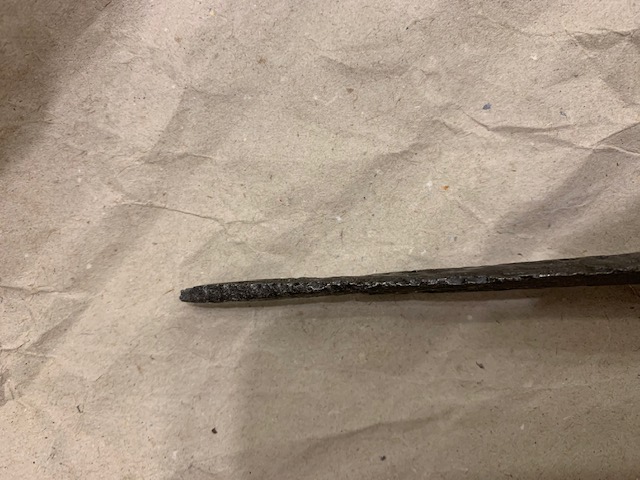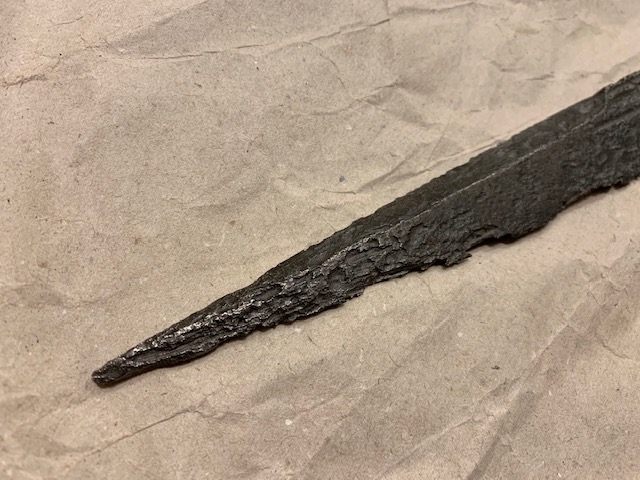
Peen block
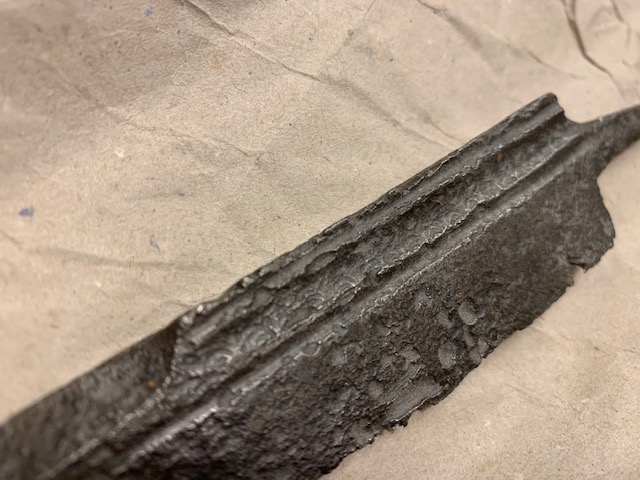
Pattern
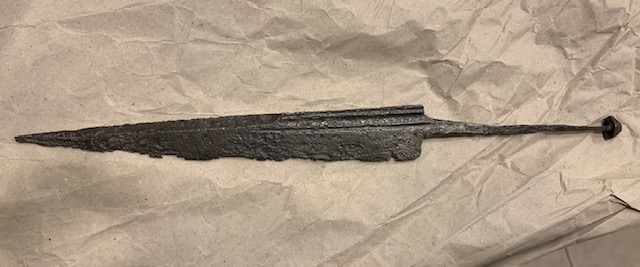
Full side
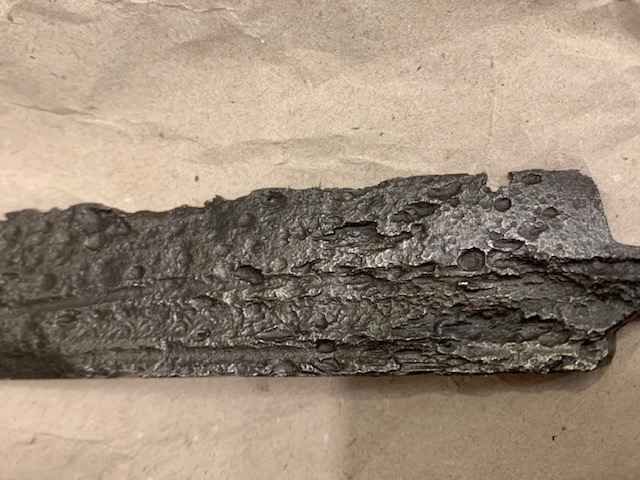
Opposite
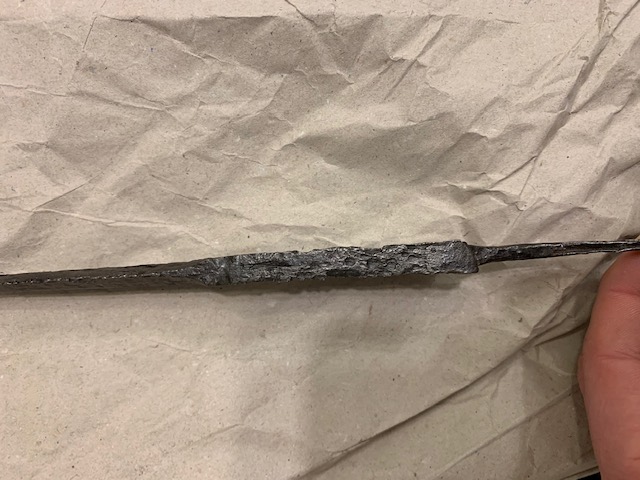
Spine
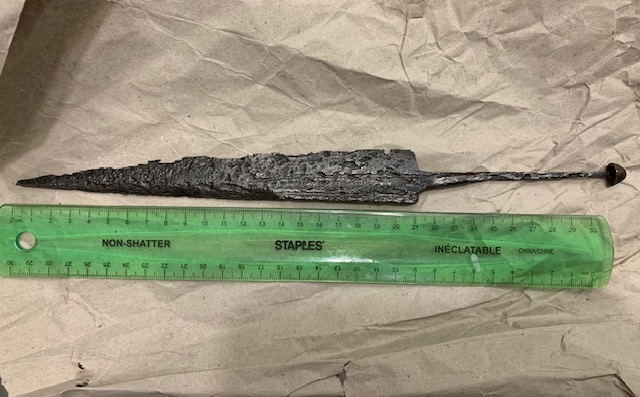
With ruler







| Tyler C. wrote: |
| Victor, thanks for the comments and analogy. I got a kick out of that ;) .
The main reason that I shied away from thinking it was a seax is the blade shape. I have never seen a seax with straight sides that taper to an acute point like this does. This blade is also sharpened on both sides (after the fullers on the back side) which is also uncommon for a seax. The blade from your example is more like what I am used to calling a seax. Are you aware of any that have been found with a blade similar to the one in the pictures I posted? |
| Leo Todeschini wrote: |
| Nice blade.
I would shy away from rondel on the whole; it could be, but there is nothing particularly 'rondel' about it, so it could be many other types of dagger, but I would say medieval. However I can't see the pattern welding. It would be odd for it to be medieval and pattern welded......... Tod |
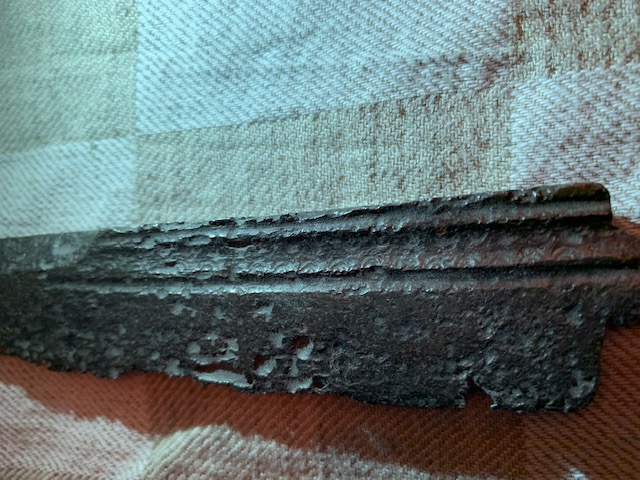
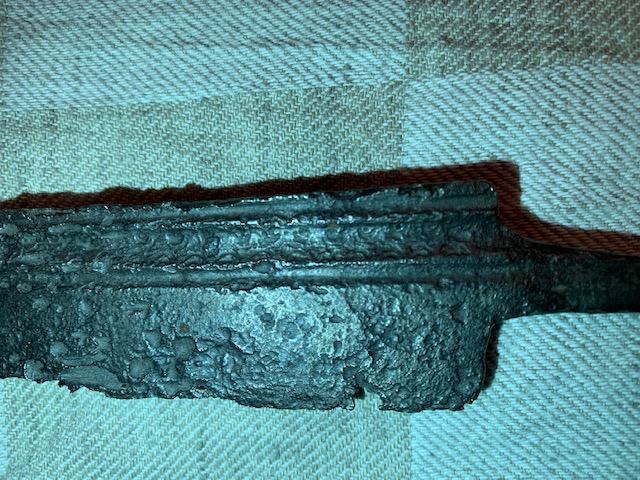
| Sean Manning wrote: |
| Tyler, its rude to tell someone else what they should be seeing or hearing, especially with a very low resolution, poorly lit photo. I stand by my words: I don't see anything other than heavily corroded iron.
Edit: or do you mean the row of semi-circles on the flat between the two fullers? The knife looks like it was aggressively cleaned with chemicals so I would like to hear from people with experience with aggressively cleaned old iron. |
| Mikko Kuusirati wrote: |
| I do see something that may or may not be pattern-welding, a series of alternating loops or scallops along the fullers. It's a lot more obvious in a few photos than in others, and could also be the result of twisted or piled construction rather than pattern-welding, or even just a trick of light and the corrosion. |
| Mikko Kuusirati wrote: |
| Here are some examples of bollock and dudgeon daggers featuring wooden hilts with small peen blocks very much like this one:
[ Linked Image ] [ Linked Image ] |
